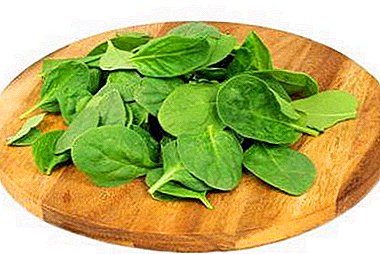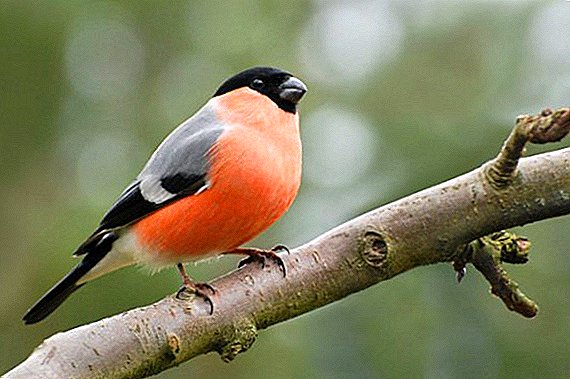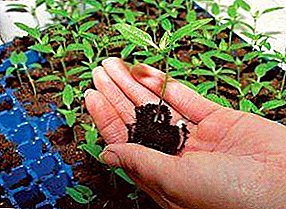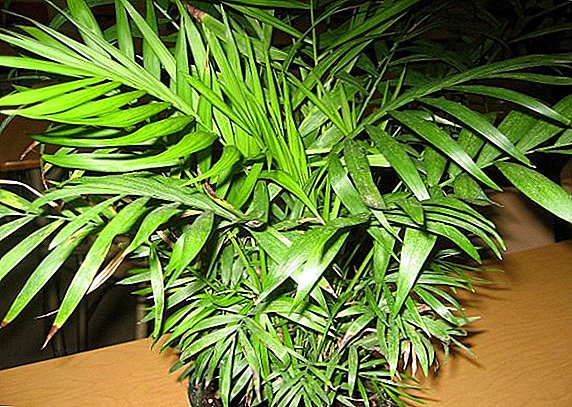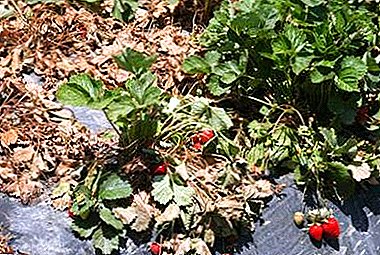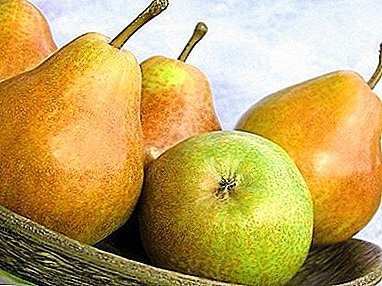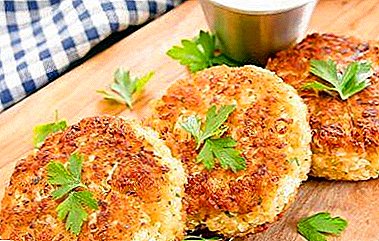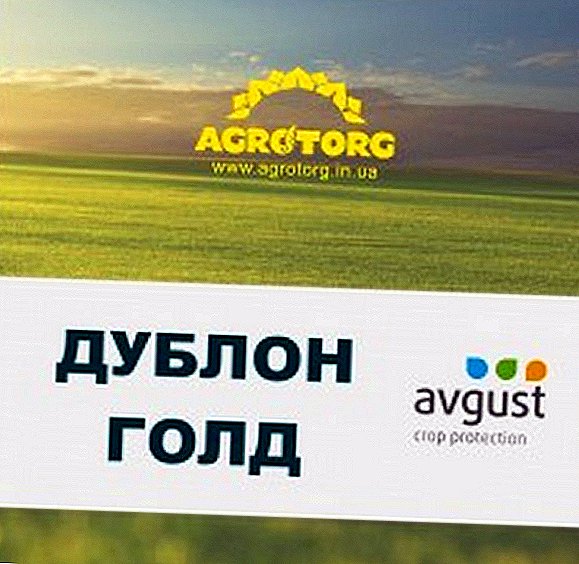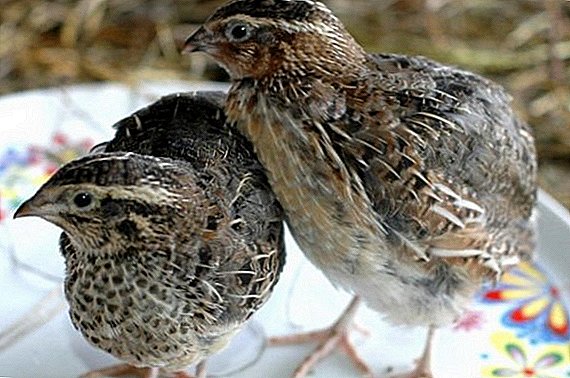 The most popular breed that is grown on our poultry farms is Estonian quail. The success of the breed lies in the fact that birds can be bred both for the purpose of producing meat and for eggs. Estonians were obtained as a result of the hybridization of the English whites, Japanese quails and the Pharaoh. All of these breeds are characterized by a high level of viability, long lifespan and long-term interval of egg-laying. What are the advantages of the hybrid, what are its disadvantages and how to contain it, we will consider further.
The most popular breed that is grown on our poultry farms is Estonian quail. The success of the breed lies in the fact that birds can be bred both for the purpose of producing meat and for eggs. Estonians were obtained as a result of the hybridization of the English whites, Japanese quails and the Pharaoh. All of these breeds are characterized by a high level of viability, long lifespan and long-term interval of egg-laying. What are the advantages of the hybrid, what are its disadvantages and how to contain it, we will consider further.
The appearance of the bird
Officially, Estonian quail appeared recently, only 30 years ago. Representatives of this breed have a yellow-brown color, but the colors are not two-ton. Dark brown strokes got to Estonians from one of the parents - "Pharaohs". Estonians have secondary distinct sex differences, but they do not appear from birth.
Check out the most
It is worth noting that males are distinguished from females most often by color, since all members of this breed have a round body shape, with a short neck and tail. The back of the Estonians is slightly raised, has a hump-like bend.
Did you know? Due to the unique composition of quail eggs successfully used for the treatment of diseases of the cardiovascular, nervous system, gastrointestinal tract, thyroid, stone disease, diabetes, epilepsy, bronchial asthma.

Male
Estonian males have a brown cheek and a mandible area and a goiter a little lighter. The head of the male is dark brown, but has 3 light yellow lines. The beak of male quails is dark brown, with a clarified tip.
The feathers of Estonians are also painted brown, but the color is brighter than the rest of the body. Light strokes are visible on the wing wings of the males, which contrast favorably with the basic color of the feathers.
Check out the most popular breeds of quail.
Around the anus, the skin is pink.
Female
The females are somewhat lighter than the males and look as if they were poured. Their cheeks and mandibles are grayish, and the cloaca is distinguished by a bluish tinge. The breast and goiter of females are grayish-brown, decorated with dusky specks. 
Important! Young individuals do not look so motley - their color is more uniform.
Characteristics and productivity
Estonians are distinguished by tremendous productivity in terms of laying eggs. Typically, females begin to postpone from the 37th day of life. In a year they can produce about 280-300 eggs. Moreover, the process itself continues almost all year round. The average weight of one egg is 10-13 g.
In terms of masonry, Estonians can be considered champions - 85-90%. As a result, one quail can produce 3800 g of eggs per year.
The weight of quails can be different, but its average value is 180-200 g. Moreover, females weigh more than males.
An equally important indicator is the taste of meat. And here the Estonians are at the height - their meat is characterized by a pleasant taste, which became the reason for the prevalence of the breeding of these birds. 
Advantages and disadvantages
The strengths of Estonian quail are:
- high survival rate (livestock safety) - 98%;
- egg-laying intensity (86-91%);
- active growth;
- earliness (laying eggs start after 37-40 days);
- high hatchability (at least 80%);
- long egg laying period;
- significant vitality.
Rules of content at different times of the year
Estonian quails are unpretentious in their care, so this is an ideal choice for both farmers and uncertain farmers. Caring for the birds is easy, and the survivability is quite high.
If you plan to breed quail for eggs, then you need to place them in low (about 20 cm) cages. 
Important! Quail - extremely active birds. Sensing anxiety, they try to jump high. Because the cells must be made of a material on a tissue basis.Do not forget about the space, which will be enough for a quail. In the case of the Estonian it is 100-120 square meters. see. If there is not enough space for placing cells, then it can be placed in two tiers.
Lighting and humidity
The microclimate of the room in which there are cells with quails, requires constant monitoring. The air must be dry, warm, and the room itself is well ventilated.
Summer
Fresh air is simply necessary for a bird, after all they differ in an intensive metabolism. At the same time indoors it is impossible to allow emergence of drafts. Quails are vulnerable to the effects of low temperatures.
Optimal indicators for the maintenance of Estonians:
- humidity - 70% (acceptable - 55-75%);
- temperature - + 20-22 ° C (permissible - + 16-25 ° C).
 Quail in the summer aviary
Quail in the summer aviaryIn winter
If cultivation of Estonians continues in cold weather, then indoors it is worth keeping the temperature + 20 ° C. With a cold snap, quails gather in a heap, jumping on each other, which can lead to the loss of livestock.
We recommend to learn more about the special features of breeding and conditions of keeping quail at home.
In winter, the lights are turned on and off every 3 hours, providing a 17-hour daylight hours. Such a regime will allow quails to maintain their productivity.
In the room for the winter should be putty all the walls and close the ventilation holes. However, the house should be ventilated regularly, because increased humidity can cause illness.
Diet and feeding
Feed Estonians need 2-3 times a day. Up to 33 g of feed per day per individual.
Important! To achieve better productivity, feeding needs to be done at the same time.
 Estonians love this kind of food:
Estonians love this kind of food:- different varieties of wheat;
- Wheat groats;
- corn;
- oat groats;
- feed
The most favorite delicacy of quails is the May beetles. Therefore, you can safely include them in the diet feathered.
A couple of times a week, Estonians can be given meat, boiled liver, eggs and cottage cheese. It is also good to add greens and eggshells to food. All feed must be fresh and chopped.
Do not let the water out of the sight - it should always be in the drinking bowl.
If quails are raised for the sake of meat, then there should be more protein in the feed, and to get high-quality eggs it is better to add calcium to the feed.
How to breed Estonian quail
Unfortunately, domestic quails do not have a hatching instinct; therefore, they can be propagated only by the incubation method. To do this, any incubator equipped with a calibrated thermometer and hygrometer will do. What the incubator will be made of is not important. 
Did you know? Quail eggs do not spoil, because they contain lysozyme. This amino acid does not allow microorganisms to develop.
Selection of eggs for incubation
For healthy young stock, it is necessary to choose eggs of the correct form, smooth, dull, with a clean shell. The material should be of medium pigmentation.
The shelf life of selected eggs is no more than 7 days at a temperature of at least + 10 ° C. During storage eggs should be turned twice a day.
Too elongated, spherical, too pigmented, large and rough eggs are rejected - they are not suitable for breeding.
We recommend to learn how to get young quails using an incubator and how to choose a suitable incubator for home use.
Incubation period
From the third day of incubation, eggs are cooled. Cool 2 times a day for 8-10 minutes. At the same time during the incubation period it is necessary to maintain the optimum temperature and humidity:
- 1-14 days - + 37.8 ° C, humidity - 55-65%;
- 15-17 days - + 37.3 ° C, humidity - 75%, without a coup.
 The Estonian breed pereparel is removed only in automatic incubators. Chicks are transplanted into a warm box or cage and the temperature is maintained at + 33-35 ° C for a week. In the second week, the temperature should be + 30-32 ° C, in the third - + 26 ° C, etc., until the temperature drops to + 22 ° C.
The Estonian breed pereparel is removed only in automatic incubators. Chicks are transplanted into a warm box or cage and the temperature is maintained at + 33-35 ° C for a week. In the second week, the temperature should be + 30-32 ° C, in the third - + 26 ° C, etc., until the temperature drops to + 22 ° C.Learn how to make a cage for quails on your own.
Diseases
Estonians are always active and have a good appetite. Their plumage is always clean and brilliant. If quail fell ill, then it will affect its appearance and behavior.
What illnesses are ill
The most common disease quail - pseudo. Infection with this disease occurs through feed, water or sick birds.
In addition, Estonians can be ill:
- cholera;
- pullorosis;
- ornithosis;
- aspergillosis.
Did you know? Some experts argue that quail eggs are powerful stimulants of potency. And according to some indicators, even superior to Viagra.
 In addition, as a result of malnutrition, birds can develop rickets, avitaminosis, or loss of cloaca. These problems are solved by adding to the diet of vitamin-mineral components or feeding a certain feed.
In addition, as a result of malnutrition, birds can develop rickets, avitaminosis, or loss of cloaca. These problems are solved by adding to the diet of vitamin-mineral components or feeding a certain feed.If the regime of detention is violated, it also affects the health of quails.
Disease Prevention Rules
Everyone knows that a disease is better to prevent than to cure. This rule is also relevant for quails. Therefore, birds need to inspect daily, as well as focus on appetite and energy.
Find out how useful and dangerous quail eggs are.
When the first symptoms of the disease appear, the individual is isolated. For these purposes, it is desirable to have a spare cell. Quails provide first aid and show the vet.
Following all the rules of growing and maintaining Estonian quails, it is quite possible to achieve good results in a short time. And often, the one who started growing Estonians will never part with them.


